Miniaturization is increasing across industries, as the need for very small and very complex components increases in consumer electronics, medical devices, MEMS, life sciences and many other industries. Electronics devices have to pack in a wider variety of smaller components to accommodate multiple wireless technologies and advanced capabilities. Medical applications require the production of tiny components and even very small devices that can be implanted directly into a patient.
At the same time, manufacturers are searching for new approaches to creating these highly detailed but small products and components.
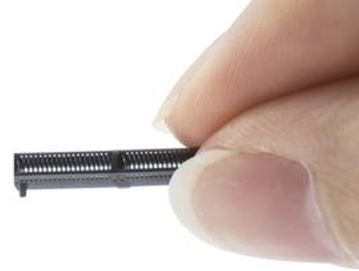
Demand is high for small, precision parts, but traditional manufacturing processes are slow and expensive.
The challenge for producing these small, complex, high-precision parts is that the cost to manufacture them is high while part design is constrained by the production methods available. Plastic or polymer components in these applications are traditionally created through micro-injection molding, an expensive production method, or equally as expensive micro- machining processes. Creating molds and tooling for these tiny components is more costly than traditional injection molding because of the added expense of specialized tooling and fixturing. The upfront cost of creating initial molds can be tens or hundreds of thousands of dollars, driving up the cost of each piece, particularly for relatively small runs.
Current 3D printing technologies available on the market are also not suit- able, even for prototyping. Consider the chart on the next page:
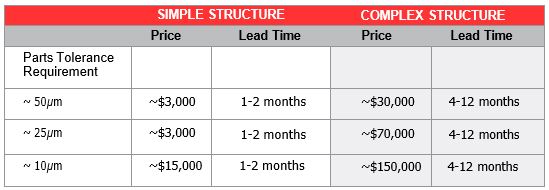
In the case of this chip socket example, the cost to produce a simple part with a 50μm tolerance is relatively low, with mold costs of approximately $3,000 and a few months lead time. As the tolerance requirement increases, the mold cost increases exponentially. For more complex structures (such as a socket with more than 2000 holes), the mold cost can be as much as ten times more expensive, with lead times of up to a year. And once the mold is created, the manufacturer sacrifices any flexibility.
If there are design changes down the road, the process can be delayed by weeks or months, with tens of thousands of dollars in additional costs. New technology has emerged that provides the flexibility of additive manufacturing at a micro scale, but at a price point that is affordable for many production scenarios. Micro 3D printing technology can create highly detailed parts without the need to create costly molds. Because the economics of 3D printing for micro- fabrication are significantly different than those for printing larger products and components, this approach is a more cost-effective means of production compared to injection molding, with the added benefit of providing greater flexibility.
For companies manufacturing traditional parts and components, the choice to use injection molding or 3D printing comes down to simple math: in most cases, as production volume increases, the cost to produce each part via 3D printing rapidly begins to exceed the cost of molding. In some applications, that crossover point happens within a few hundred parts.
That is because for most traditional parts using regular plastic, while the upfront mold cost may be high, materials are less expensive, so the cost of each part is less compared to printing. As a result, 3D printing has only made sense for relatively low-volume production runs. For larger volumes, it is more economical to build the mold and manufacture conventionally.

Where has 3D printing been adopted for production parts most widely? In low- volume or custom applications such as aerospace, medical devices, and dental molds.
For microfabrication, however, those standard rules do not really apply, and the math is almost reversed. Why? First, be- cause the cost to produce a mold for very small components is much higher. Second, the cost of materials as part of the overall investment in 3D printing is much smaller because the parts themselves require much less material.
As a result, even if the 3D printing materials are 10X the cost of traditional materials, it matters less to the overall cost of producing small parts. In these instances, 3D printing can make sense for small, high- precision parts where production is in the tens of thousands.
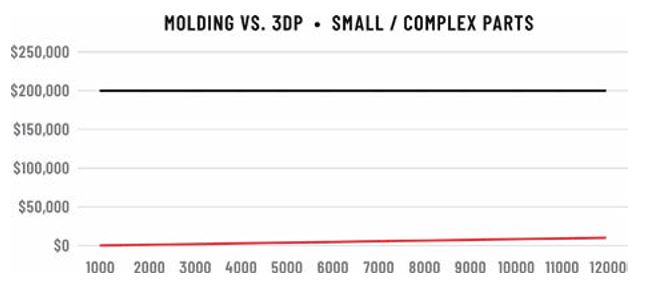
The use of 3D printing does require the purchase of a printer (or multiple printers), which can be an expensive proposition. However, the cost of those printers is amortized over time, and unlike molds and dedicated tooling, the printers can be used to create other parts (and even to create new molds) without any additional investment.
THE ADVANTAGES OF MICRO 3D PRINTING
Micro 3D printing presents a number of potential benefits for manufacturers that need to generate relatively low-volume production runs of very small and very precise parts or products. Those include:
Flexibility. As mentioned above, a 3D printer can be used to produce a wide variety of parts for different applications. Manufacturers can quickly respond to design changes, customer requirements, or market conditions without the cost and complexity of creating new molds and tooling when a modification is required.
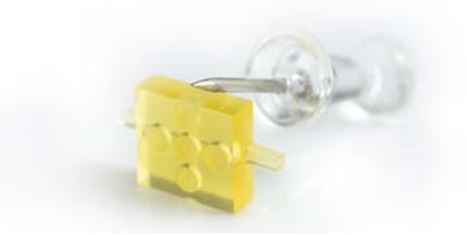
Lower material and chemical requirements than traditional 3D printing. A significant amount of the cost of 3D printing is generated by materials requirements. The filaments are more expensive than similar materials for injection molding or machining operations. For many standard-sized parts, users also have to print elaborate supports that can create costly waste. Micro-scale parts require much less in the way of materials and finishing/cleaning chemicals, so even printing thousands of parts presents a relatively small investment in materials.
Elimination of mold and tooling costs. The development and creation of specialty molds and tooling for micro-scale parts is significantly more expensive than in the case of a standard-size part. And these molds and tools can rapidly become obsolete as requirements or designs evolve and change. While 3D printing does require an equipment investment, it eliminates the ongoing need to recreate molds and tooling. For parts that do require injection molding approaches, the printers can be used to economically create new micro molds as well, making them a good fit for blended operations that rely on a variety of production techniques.
While higher part counts (in the millions) at the micro-scale may not be economically feasible using 3D printing, for production runs in the tens and hundreds of thousands, micro 3D printing is an affordable option. The technology can also provide additional improvements and benefits over the long run, that further increase the return on investment (ROI).
The benefits of micro 3D printing can be seen in these real-world use case examples. In both instances, the customer was able to print a significant number of parts at a relatively low cost, while gaining the flexibility to incorporate design changes easily or to shift production to new or different products quickly.
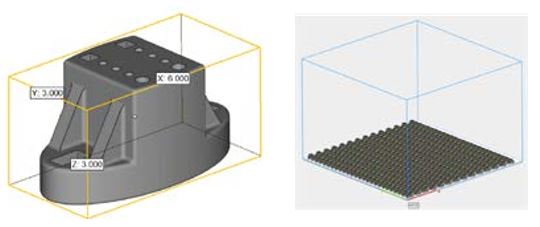
In this application, the customer can print 10,000 parts per month/per machine at a cost of just $0.38 per part. The first image above shows the scale of the part. The second displays that 350 parts can be printed in a single build.
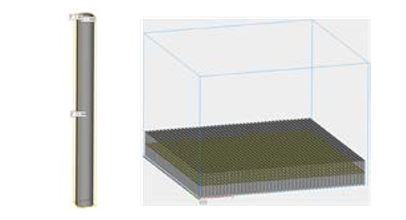
In this example, the customer is able to print as many as 20,000 parts per month/per machine at a cost of $0.25 per part. The build volume here is even larger than in the first example, with 2,116 parts printed in a single build.
Boston Micro Fabrication (BMF) has commercialized a 3D printing approach called Projection Micro Stereolithography, or PµSL. PµSL is similar to other SLA or DLP 3D printing processes on the market, but with a few key differences. While based on the principles of stereolithography, the technique allows for rapid photopolymerization of an entire layer of resin with a flash of UV light at micro-scale resolution. This allows the process to achieve ultra-high accuracy, precision and resolution that is simply not possible using other techniques.
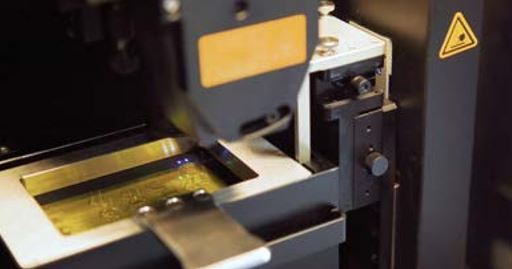
BMF’s microArch line of 3D printers introduce a high precision lens in-be- tween the light source (a DLP projection) and the resin bath. The printers also highly control the XYZ movement by using high precision stages, components similarly used in a coordinate measuring machine. The combination and choreography of these systems enables an optical resolution of 2-10 microns, de- pending on the system, and the ability to achieve a tight tolerance in the +/- 25μm range. Combined with the speed that comes with DLP imaging, this approach yields the high performance and through- put needed for industrial applications.
BMF also provides an open material system so that users can print with specially formulated BMF liquid polymers, or other materials of their choice. Within BMF’s line of photopolymers, users can select from materials that are tough, rigid, high-temp, biocompatible and durable for functional end-use parts.
The BMF microArch line of 3D printers includes three different series of printers based on resolution capabilities.
THE 2μm SERIES
This is the company’s highest resolution system for applications that require ultra- high resolution and tight tolerances.
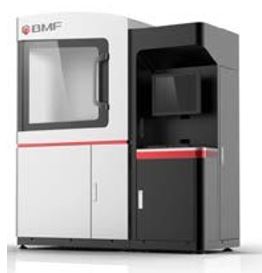 microArch™ P130
microArch™ P130
Material: Photosensitive Resin Build Size: 3.84 x 2.16 x 10mm External Dimensions: 1720 x 750 x 1820mm
Weight: 390kg
microArch™ S130
Material: Photosensitive Resin Build Size: 50 x 50 x 10mm External Dimensions: 1720 x 750 x 1820mm
Weight: 390kg
10μm SERIES
These printers provide a high resolution with an in- dustrial production build volume.
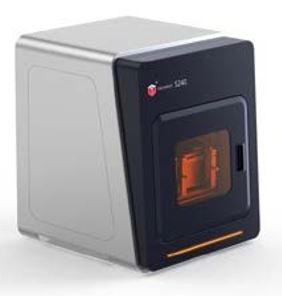 microArch™ P140
microArch™ P140
Material: Photosensitive Resin Build Size: 19.2 × 10.8 × 45mm
External Dimensions: 650 x 650 x 750mm Weight: 85kg
microArch™ S140
Material: Photosensitive Resin Build Size: 94 x 52 x 45mm
External Dimensions: 650 x 650 x 750mm Weight: 85kg
microArch™ S240
Material: Photosensitive Resin Build Size: 100 x 100 x 75mm
External Dimensions: 650 x 700 x 790mm Weight: 130kg
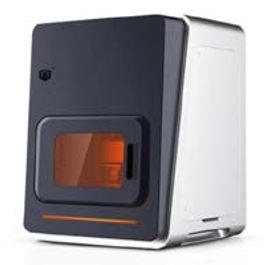 25μm SERIES
25μm SERIES
The P150 is BMF’s entry level micro-precision 3D print- ing system. With print resolution down to 25μm and
a lower price point, it’s the perfect system for small, detailed parts that don’t need ultra-high resolution.
microArch™ P150
Material: Photosensitive Resin Build Size: 48 × 27 × 50mm
External Dimensions: 530 x 540 x 700mm Weight: 65kg

Micro-precision 3D printing provides a cost-effective way to address the need for miniaturization in many industries, without the high cost of specialized tooling and molding, while providing greater production flexibility. In micro-scale applications that are increasingly common in electronics, medical, and other industries, the ability to print tens or hundreds of thousands of parts can provide real economic savings as well as greater responsiveness to design changes and market conditions.
Because of the advantages of micro 3D printing, the costs per part can be less than injection molding or micro- machining for industrial-scale production runs.
For information about how micro 3D printing can benefit your application, contact Boston Micro Fabrication to discuss your organization’s needs today.
About Shree Rapid Technologies (SRT)
Shree Rapid Technologies (SRT) is a pioneer in 3D Printing Technology and incorporated in 2007. They are specialized in cutting-edge technology into 3D Printing, 3D Scanning and Measurement that enables us to design, validate and create precise and intricate 3D prototypes and end use parts. They cater to variety of applications in multiple industries line Aerospace, Automotives, Bio Printing, Dental, Jewellery, Machine Tooling, Medical Devices, Service Bureaus, etc.
Their state-of-the-art Customer Innovation Center (CIC) is laced with advanced 3D Printers, 3D Scanners, Metrology and Inspection.
To visit the experience center or any other query kindly mail at : [email protected]
Contact Number: (+91) 7208843624 / 022-67415403
To Know more visit: https://www.shreerapid.com/
Subscribe to AM Chronicle Newsletter to stay connected: https://bit.ly/3fBZ1mP
Follow us on LinkedIn: https://bit.ly/3IjhrFq
Visit for more interesting content on additive manufacturing: https://amchronicle.com



